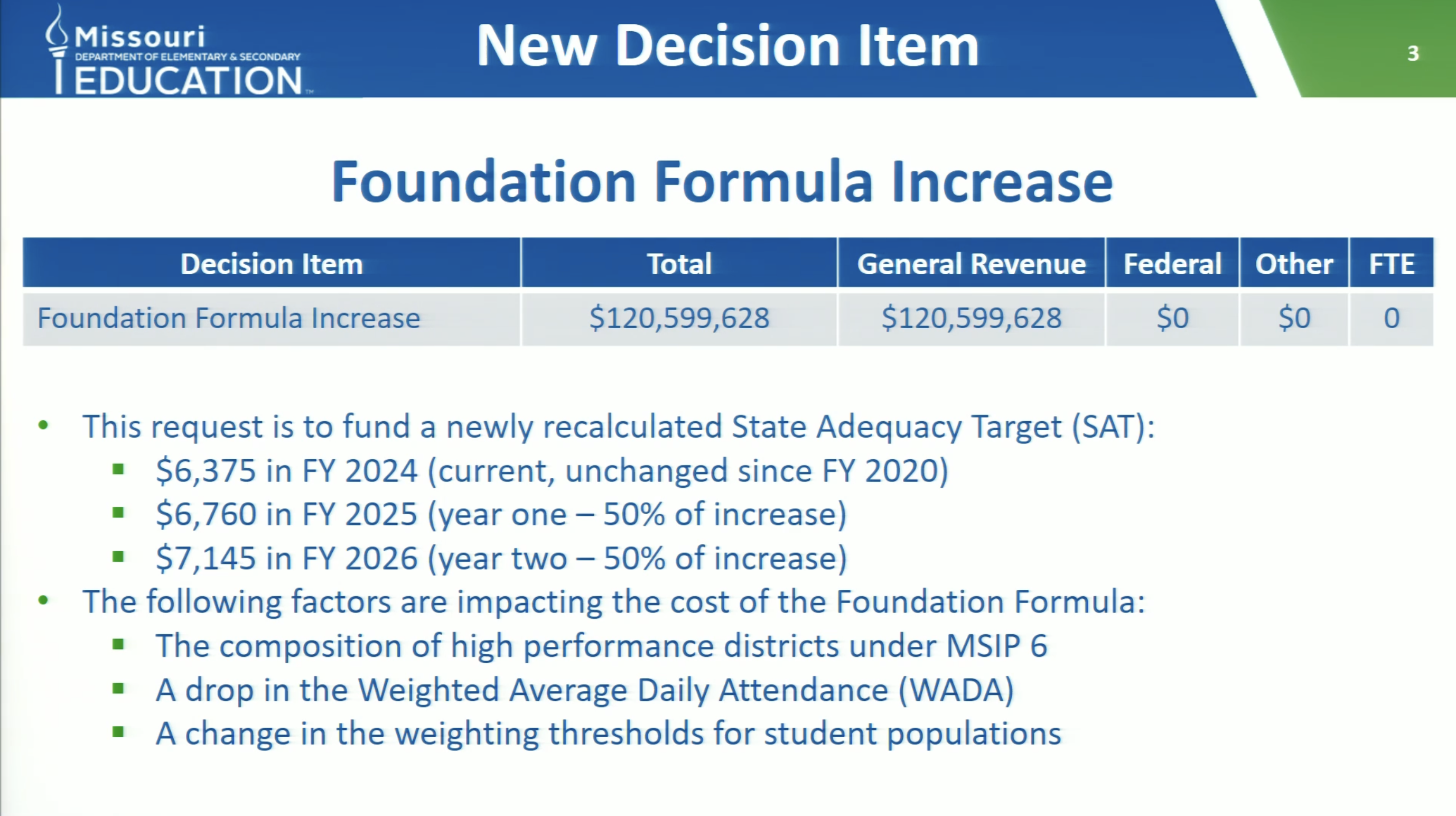DESE to ask for $420 million more for public schools as enrollment and number of high-quality districts declines
The Missouri Department of Elementary and Secondary Education (DESE) is preparing to ask the state government for an additional $420 million in funding for public schools over the next two years.
The increase in funding is a result of a re-evaluation of the State Adequacy Target (SAT). The SAT is the base amount that the state pays public schools for each student. It is calculated through a complicated formula based on how much the highest-performing districts in the state spend per student each year.

State statute requires the SAT to be recalculated every two years and has not increased for the past five years. Currently, the state pays districts $6,375 per student but this has been recalculated to increase to $7,145 per student by 2026 (increases in SAT are phased in over two years).
The new recalculation means that DESE is planning on asking the state for a $120 million funding increase in 2024 and then an estimated additional $300 million increase in 2025.
Districts exceeding 90 percent on state accreditation drops to just 35
Kari Monsees, the Deputy Commissioner of the Division of Administrative and Financial Services, told the Missouri Board of Education on Tuesday that the increase in the SAT is largely due to a reduction in the number of districts that are used to calculate the SAT.
He said that the SAT is based on how much districts that achieve over 90 percent on the state’s accreditation system (called APR) spend per student.
“With MSIP 6 we have a more selective pool,” he said. “In the past, we have had many districts over 90 percent now it is a much smaller list.”
Monsees said that the number of districts crossing the 90 percent accreditation threshold for two consecutive years had dropped from over 100 to just 35.
State already paying districts close to $180 million more than it should for students that do not exist
Monsees said the request for an increase in state funding next year is actually less than it should be because it coincides with the expiration of a hold-harmless program that allowed districts to use pre-pandemic enrollment numbers when calculating state aid even though actual student populations and attendance had dramatically decreased since 2020.
“We have had protections in place since the pandemic and those protections are ending,” he said. “We will see a very significant drop in the weighted average daily attendance numbers across the state.”
He said that many families had chosen not to enroll their younger children in the public school system during the pandemic and that attendance rates in higher grades were still much lower than they should be.
As a result, the request for increased funding based on the SAT increase next year will be much lower than it actually should be because the state will stop paying districts for students that do not exist in their systems.
“The correct enrollment will be reflected in the first year,” said Monsees. “The second-year request will be more than two times this. It will be in the range of $300 million.”
Board member questions if taxpayers are getting a return on their investment
Board member Peter Herschend asked DESE staff how they should respond to concerns over a return on investment with the continued increases in school funding.
“We have vastly increased the real dollars spent in education in this state… We have not seen real results in academic performance,” he said. “It is a real question… We do not deal with it. The amount of money that is spent on education is way, way, way higher.
“In my company, if we spend this much money on something we expect an impact,” he added.
Board Chair Charlie Shields said schools were being asked to do much more than they had been asked to do in the past, but added that it was, “a really good question.”